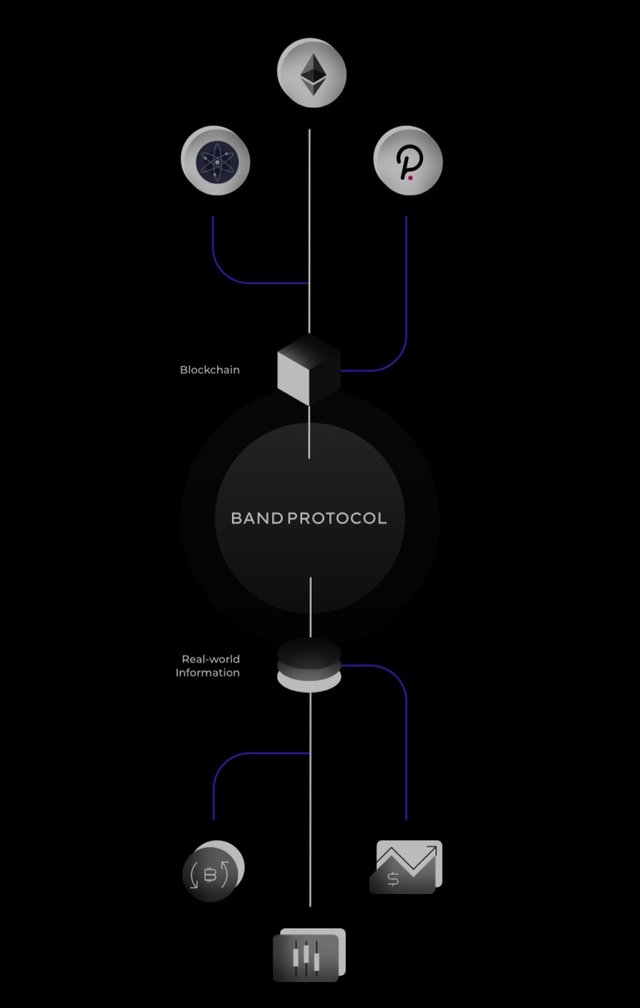
Do you know what Blockchain Oracles are? We want to know your opinion.

Oracle is basically an umbrella term that change its meaning as per the context in which we use it. Let me pick up a context which will help us understand blockchain oracle later. In ancient Greek mythology, an oracle was a person or place that was believed to have the ability to communicate with the gods and provide advice or predictions about the future. So we can say that oracle was a channel of communication or a bridge or connecting link between people and gods. Blockchain oracle is somewhat similar to that.
An oracle serves as a connecting link or a bridge between the blockchain and the outside world. We know that blockchain and smart contracts have gained notoriety for their intelligence, but they are not capable of interpreting external data as they are unable to understand the language of the outside world. As a result, oracles are necessary to act as intermediaries between the external world and blockchain.
Oracles also play a critical role within the blockchain as many smart contracts are unable to interact with other networks. Oracles are therefore instrumental in connecting smart contracts from one network to another. Oracles have the ability to convey various types of information, such as temperature readings, poll results, and sports events, from the external world to the blockchain, as well as vice versa.
Blockchain oracle can be a software programs or even a hardware device like a sensor. Let me give you an example , how an oracle in the form of a thermosensetive device can enhance quality of . For instance, in hospitals where vaccines are administered to children, the vials containing the vaccines are labelled with thermo-sensitive material known as "vaccine vial monitor". This material changes colour when the temperature of the vial increases, indicating whether the vial should be used or discarded. However, there is currently no external authority overseeing whether this practice is being implemented in reality. If a thermo-sensitive oracle is attached to the vial and is capable of sending messages to the blockchain, the message can be read by all blockchain users, allowing for greater transparency and accountability. Should the vaccine vial exceed the acceptable temperature range for use, the oracle will immediately send a message to the relevant higher authorities, who can take swift action

What are the types of Oracles?

Oracles are differently classified. When it comes to the underlying technology of blockchain oracles, there are two types:
Software Oracles: As the name implies, software oracles use software programs to obtain and retrieve data from external sources, then transmit it to the blockchain. Software oracles are usually centralized in nature and therefore less reliable than their decentralized counterparts.
Hardware Oracles: These oracles use hardware devices like sensors to decipher information and transmit it directly to the blockchain. Hardware oracles do not have a centralized component since the information is directly transferred to the blockchain. They are therefore considered to be more available and secure than software oracles.
Based on the gateway of exchange of information, oracles are classified into three types:
Inbound Oracle: These oracles send information from the external world to the blockchain.
Outbound Oracle: These oracles transmit information from the blockchain to the outside world.
Bidirectional Oracles: These oracles are capable of transmitting information in both directions.

What do you think about decentralized Oracles?

Decentralised oracles do not have a centralized or single point of control. Instead, they are operated through a network of nodes that are capable of independent verification of data. Regarding their operation, they utilize multiple nodes to verify and validate information for transmission.
Decentralized oracles use various methods to ensure reliability and security of data transfer to the blockchain. Let's discuss a few of them. Firstly, the method of integrity and authenticity involves using data from multiple sources, such as websites and APIs. The data is interpreted and verified by independent nodes. In this way, data is independently interpreted to ensure reliability.
The second method is the use of a consensus algorithm, which states that multiple nodes involved in data transfer must arrive at a consensus to verify the data before transmission. This way, individual nodes are prevented from tampering with the data.
Another method of ensuring safety is through smart contracts. These are programmable contracts that ensure the transfer of data when certain conditions are met. As smart contracts cannot be manipulated by external sources, so it is a step toward security.
In conclusion, decentralized oracles are resistant to failure, censorship-resistant, and immune to a single point of administration, as discussed above.

Give us a use case of a decentralized Oracle.

I'll be discussing a use-case of decentralised oracle which goes by the name of BAND PROTOCOL- the a cross-chain decentralized data oracle project that has its own token, Band. Here we go:
History and Description: In 2017, Soravis Srinawakoon, Paul Chonpimai, and Sorawit Suriyakarn established the Band Protocol on the Ethereum blockchain, adhering to ERC-20 standards. The founders recognized problems such as misinformation, communication gaps, and the divide between the physical and digital worlds and set out to address them instead of simply complaining. Band Protocol has since developed its own BandChain, which uses the Delegated Proof-of-Stake (DPoS) consensus algorithm, making it both cost-effective and energy-efficient compared to the energy-intensive and costly Proof-of-Work (PoW) method. Additionally, Band has improved scalability.
Functions: The Band Protocol functions as a data oracle that bridges the gap between off-chain data sources and on-chain smart contracts in a secure manner. Its primary goal is to furnish decentralized applications (dApps) with a dependable and decentralized source of information, enabling them to execute real-world tasks. Through the utilization of Band Protocol, dApps are able to obtain data from diverse sources, such as APIs and websites, and guarantee its reliability and legitimacy through a group of validators
Functionality and Real-Life Applications:
Bandchain is a blockchain oracle that is highly secure, scalable, and efficient. It acts as a bridge between various blockchain networks and the outside world, providing access to external information such as weather, sports, lottery systems, and election results. One of the use cases for Bandchain is DeFi. To help you better understand the concept of an oracle, let me give you some real-life examples.
Yesterday, my friend from another country called me, and we discussed a cricket match that was scheduled for the following day between our countries. I supported a team from my country, and my friend supported a team from his country, and we placed a bet on the winner. We locked our assets in a smart contract and eagerly awaited the results. However, when the results came, the smart contract was unable to access them. We needed a third party, known as an oracle, to convey the results to the smart contract and release the funds. The oracle would reach out to a trusted API, verify the match results, and provide the same information to the smart contract. Only then could the smart contract execute the transaction to one of us.
Pros:
Bandchain is a cross-chain oracle that enables the interaction of contracts across different blockchain networks.
Bandchain uses the DPoS consensus algorithm, which makes it scalable, energy-efficient, and inexpensive.
Bandchain is a decentralized system that possesses the inherent features of decentralization, such as transparency, security, accountability, and auditability.
Token holders on Bandchain can select validators for transactions and earn mining rewards based on the amount of Band tokens they hold.
Bandchain can access information from both public blockchains and centralized networks, making it capable of revolutionizing any field where oracles are used.
Oracles add value to smart contracts and expand their potential. With its adaptable nature, Bandchain allows oracles to discover new possibilities for smart contracts.
Cons:
The security of the system may be compromised by involving a third-party service.
An inflation rate exceeding 10% is considered high.
Oracles can be used to transmit manipulated data to the blockchain, which can compromise its integrity.
Unequal distribution of Band tokens, with 85% being held by only 10% of accounts, raises doubts about the network's credibility.

Conclusion

Blockchain oracles are hardware or software tools that act as bridges between blockchains and the external world. They can be centralized or decentralized and employ various methods to ensure the security, reliability, and integrity of the transferred data. Blockchain oracles are capable of transferring data in either direction, enhancing security, and have found diverse real-life use cases

Thank you, friend!


I'm @steem.history, who is steem witness.
Thank you for witnessvoting for me.
please click it!
(Go to https://steemit.com/~witnesses and type fbslo at the bottom of the page)
The weight is reduced because of the lack of Voting Power. If you vote for me as a witness, you can get my little vote.
Downvoting a post can decrease pending rewards and make it less visible. Common reasons:
Submit
Welcome.
Downvoting a post can decrease pending rewards and make it less visible. Common reasons:
Submit
We support quality posts anywhere and any tags.
Curated by : @sduttaskitchen
Downvoting a post can decrease pending rewards and make it less visible. Common reasons:
Submit
Pleased!
Downvoting a post can decrease pending rewards and make it less visible. Common reasons:
Submit
Great post, @drqamu! Your explanation of blockchain oracles was concise and easy to understand making it accessible f or readers who may not be familiar with the topic. Your use of real world examples such as the prediction markets was a helpful way to illustrate the importance of oracles in the blockchain ecosystem. Additionally Your discussion of the advantages and disadvantages of differen t types of oracles provided valuable insights for those interested in learning more about the subject.
Downvoting a post can decrease pending rewards and make it less visible. Common reasons:
Submit
Hey thank you for your valuable feedback.i appreciate your time that you gave to my blog .
Downvoting a post can decrease pending rewards and make it less visible. Common reasons:
Submit
Great post @drqamu, your explanation of blockchain oracles and how they function was really helpful and illustrative. Basically, Blockchain oracles offer a lot of advantages, such as improved scalability, data authenticity, and decentralization. These advantages are particularly important in the financial sector, where trust, accuracy, and speed are paramount.
I especially appreciated the example you provided on blockchain oracle application in solving real life problems, this is a great demonstration of how technology can be used to make life easier. I also liked the idea of using a consensus algorithm to ensure data integrity; this is a reliable method that helps strengthen security.
Overall, it was an insightful post that has armed me with greater knowledge about blockchain oracles. Thank you for your time and effort in putting this together.
Downvoting a post can decrease pending rewards and make it less visible. Common reasons:
Submit
Thank you for your valuable feedback.
Downvoting a post can decrease pending rewards and make it less visible. Common reasons:
Submit